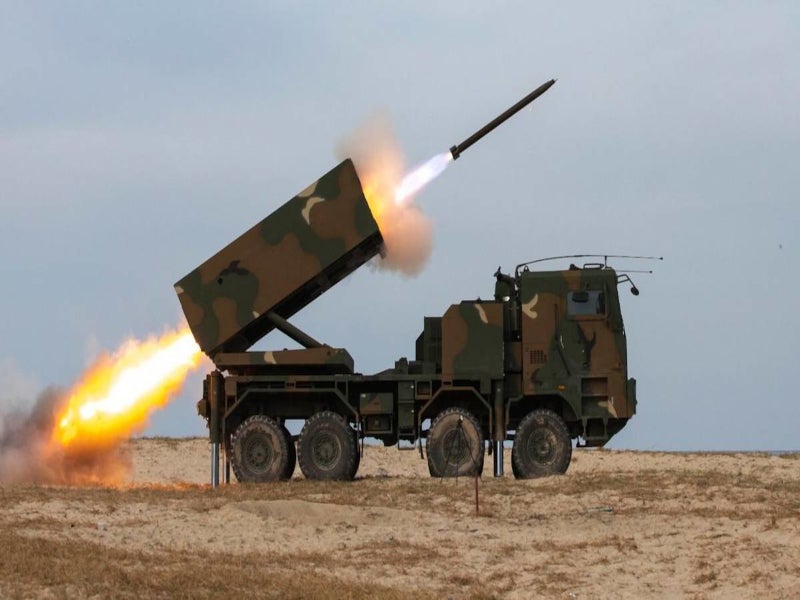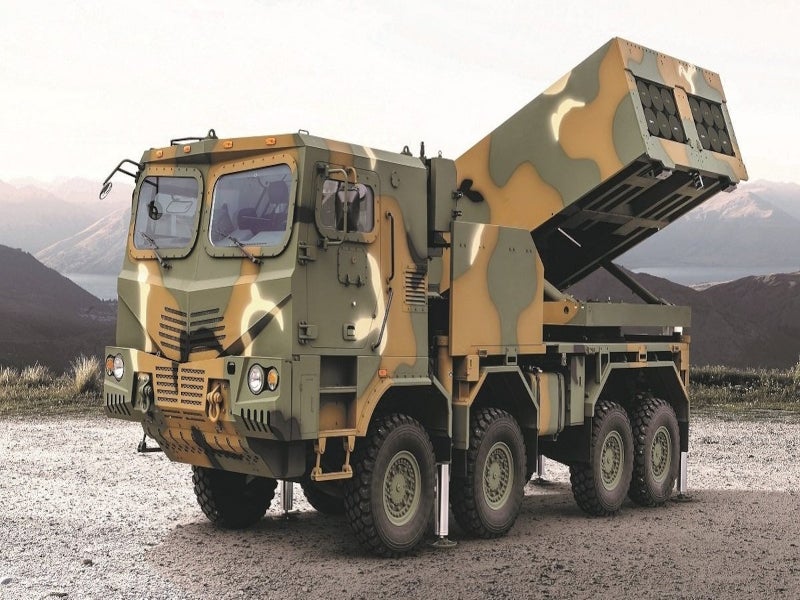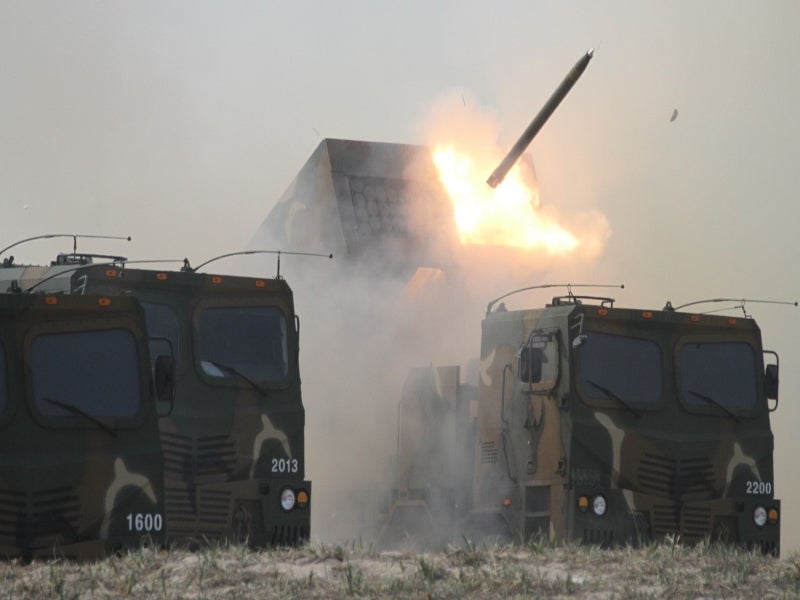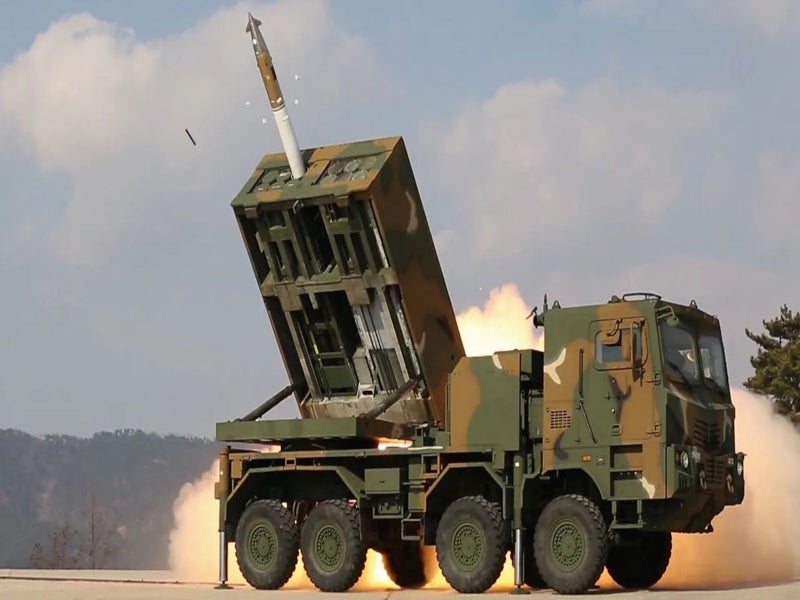K239 Chunmoo, also referred to as Korean multiple launch rocket system (K-MLRS), is a wheeled, self-propelled multiple rocket launcher manufactured by Hanwha Defense, an aerospace and defence company based in South Korea.
The K-MLRS is capable of firing different guided or unguided artillery rockets. It was primarily developed to counter North Korea’s long-range artillery threats effectively and improve the overall defence capabilities of the country.
The system is expected to replace the ageing K136 Kooryong MLRS in the Republic of Korea (ROK) Armed Forces.
K239 Chunmoo development, deliveries, and deployment
The development of the K239 Chunmoo began in 2009 after a contract was awarded to Hanwha the same year. Completed in 2013, the project involved an investment of KRW131.4bn ($112.8m). Initial production of the system began in August 2014.
South Korea ordered 58 K-MLRS in October 2014, while first deployment began in August 2015. The K239 Chunmoo is also in service with the United Arab Emirates (UAE).
Hanwha Defense signed a framework contract with Poland to deliver 288 K239 Chunmoo MLRS to the Polish Armed Forces in October 2022 to improve their deterrence capabilities.
The first batch of 18 K239 Chunmoo integrated with Polish subsystems, such as trucks and fire control systems, is expected to be delivered in 2023. The MLRS systems are expected to enter service with the 18th Mechanized Division of the Polish Armed Forces. It will protect North Atlantic Treaty Organisation’s (NATO) eastern flank, safeguarding eastern Poland and other NATO countries.
K239 Chunmoo design and features
Based on a Hanwha 8×8 truck chassis, the K-MLRS has a length of 9m, a width of 2.5m, and a height of 3m. It has an overall combat weight of 25t and can accommodate up to three crew members.
A typical ROK Army Chunmoo battery comprises 18 vehicles and uses a K200A1 infantry fighting vehicle as the command vehicle.
The Polish version of K239 Chunmoo will be mounted on Polish Jelcz trucks built by Jelcz, which is a part of Polish Armaments Group. It will be equipped with TOPAZ automated fire control systems built by WB Electronics, Polish communication systems, and battlefield management system.
Armament aboard K239 Chunmoo
K239 Chunmoo is equipped with a rocket launcher that carries two missile containers capable of holding different types of rockets of 130mm/227mm/239mm calibre.
Each missile container can hold 20 130mm K33 unguided rockets with a range of about 30km, six 227mm unguided rockets with a range of 45km, two 400mm guided rockets with a range exceeding 200km, six 13ft-long 239mm guided rockets with a range of 80km or one 600mm ballistic missile with a range of approximately 290km.
The 239mm rockets are guided by global positioning system/inertial navigation system (GPS/INS). In the impact bursting mode, the rocket is used against personnel as the warhead detonates when the rocket hits the target. In the delayed bursting mode of operation, the warhead bursts after a delay and is used to destroy bunkers.
The K239 Chunmoo can be loaded with two different types of rocket pods at once and the modular containers can be reloaded within five to ten minutes. Its displacement time is less than five minutes.
Each K239 MLRS launcher vehicle is escorted by an ammunition support vehicle (ASV) utilising the same truck chassis and carrying four reload pods.
K239 Chunmoo fire control
K239 Chunmoo is equipped with a computerised fire control system (FCS) capable of direct and indirect firing. Based on a 4×4 chassis, the FCS provides enhanced fire accuracy.
Protection features
The vehicle has an armoured cab that protects crew members against small arms fire and artillery shell splinters. It is also equipped with the required safety features to provide protection against nuclear, biological and chemical (NBC) risks.
Engine and mobility
The K239 Chunmoo MLRS is powered by a 400hp diesel engine. It can achieve a maximum speed of 90km/h on road and has a cruising range of 800km.
The vehicle can climb vertical steps of 0.6m and negotiate a gradient of 60% and a side slope of 30%. It can cross a trench of 1.4m and ford a maximum depth of 1.2m.







